Churches & Religious Building
A guide to some of the most magnificent and historically significant churches and religious
buildings in the Saint-Germain-des-Prés neighbourhood.
l’Église Saint-Sulpice
Perhaps the most famous church in this neighbourhood, in large part to it’s mention in The Da Vinci Code, Saint-Sulpice is an imposing 17th century church. In fact, its one of the largest in the whole city. If a fan of Dan Brown’s novel, do not go to this church expecting to follow the rose trail mentioned. In fact, best to forget everything you know form The Da Vinci Code and instead take it in with completely fresh eyes. Whether walking around on your own or using one of the church’s tour guides, you’ll be pleasantly entertained about the real history and facts attached to this church. For instance, Robespierre – perhaps the most famous name in the French revolution – attended services here. The Marquis de Sade was baptised here and Victor Hugo, author of Les Misérables, was married here.
Near the entrance of the church, you’ll find a chapel covered in three larges frescoes by Delacroix – a wonderful way to see his work without paying museum entry fees. These are just some of the works decorating and housed with this church; the 19th century organ being another sight of great interest to visitors.
While there is always someone on hand at the church to answer questions, on the first Sunday of the month they offer a free guided tour in English, starting after the organ recital, starting approx. at 12:45pm
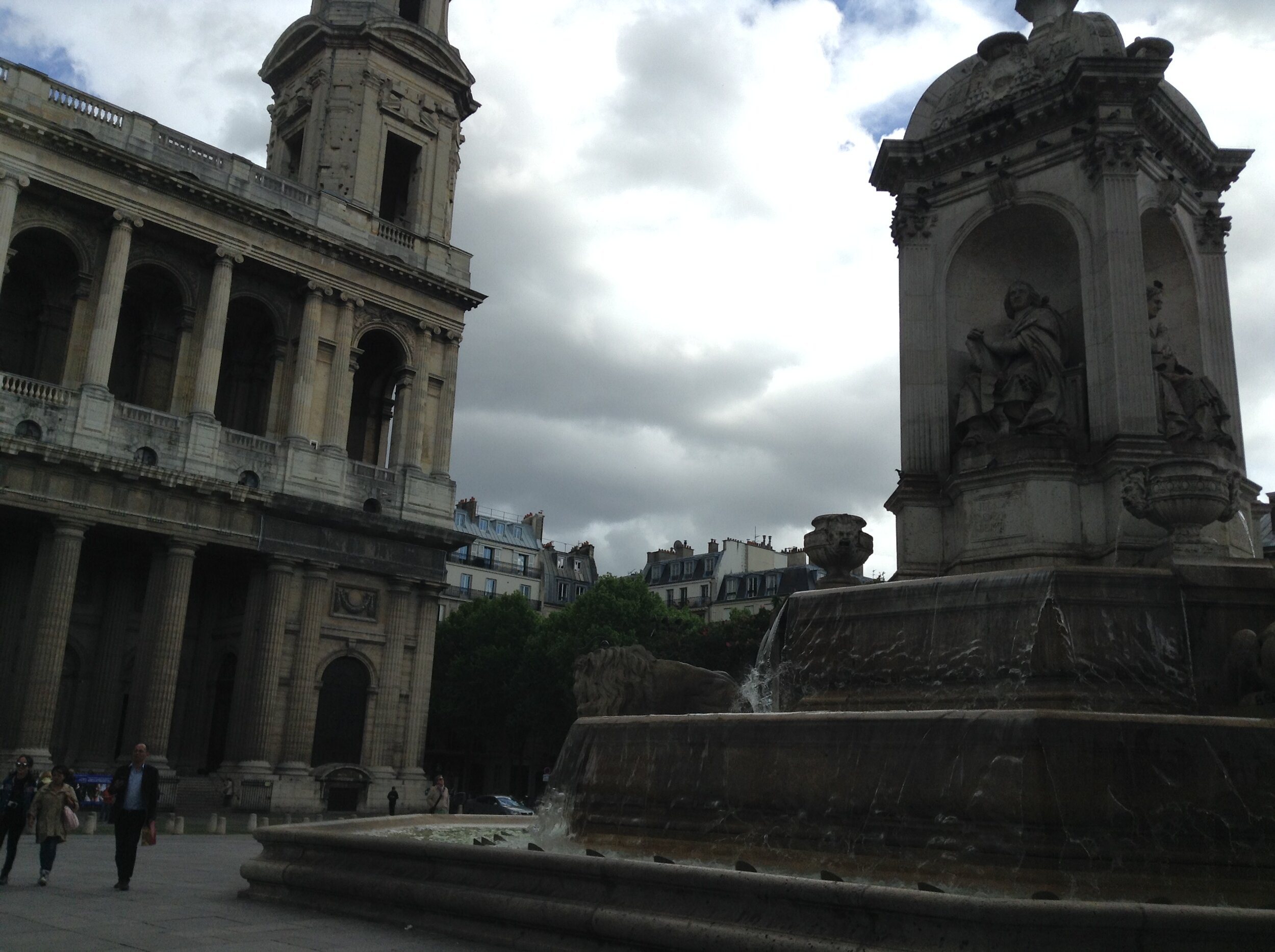

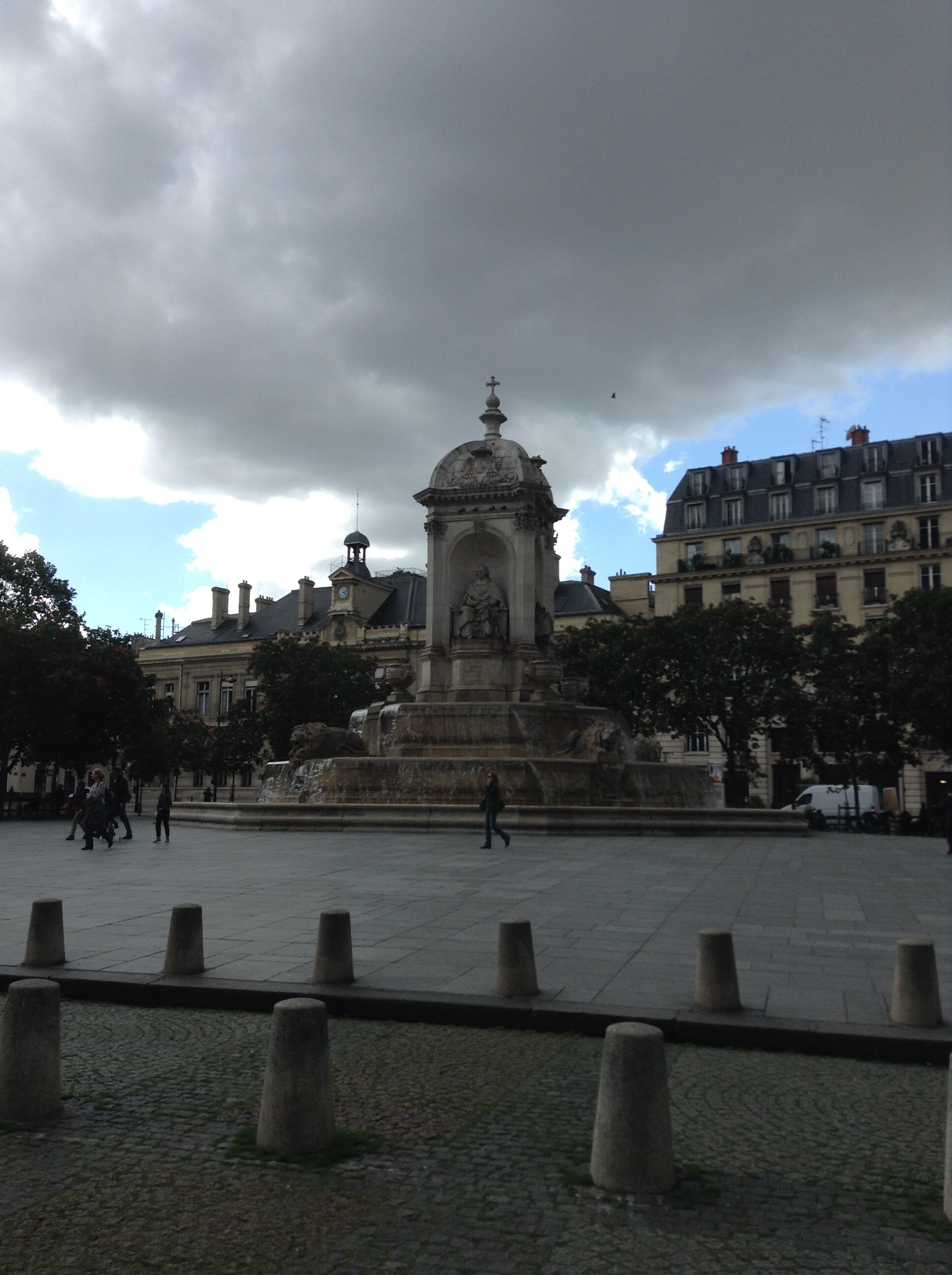
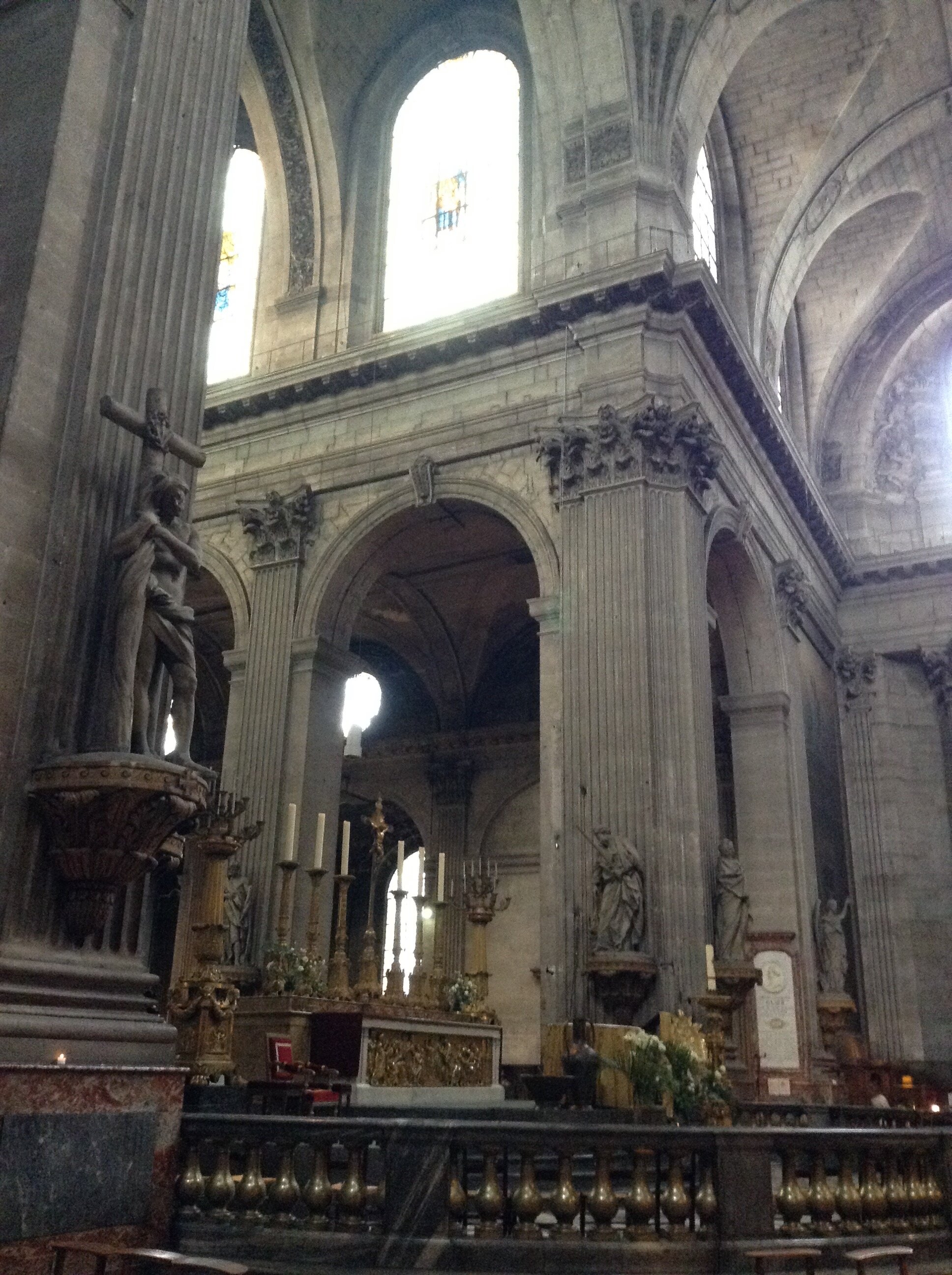
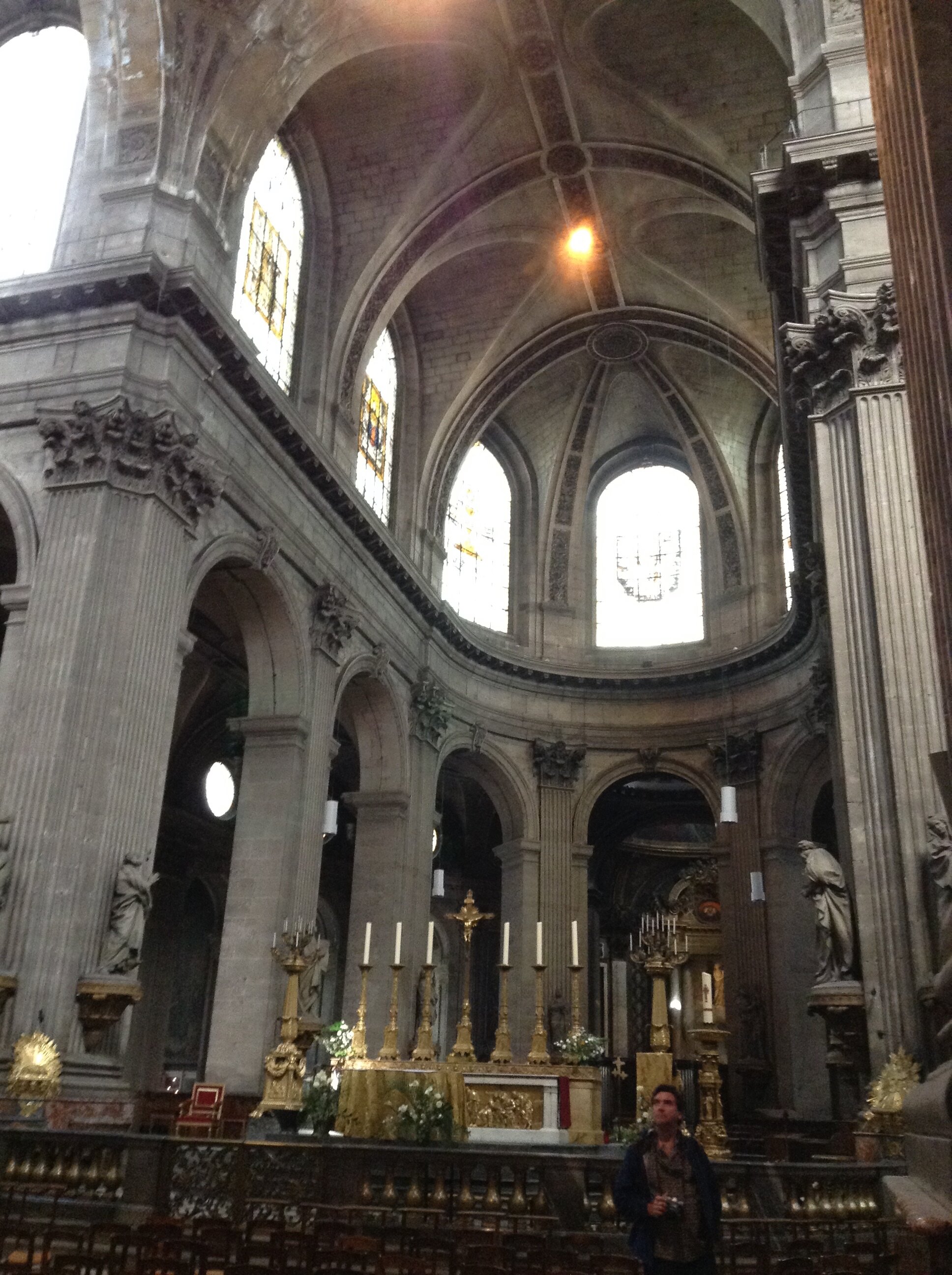
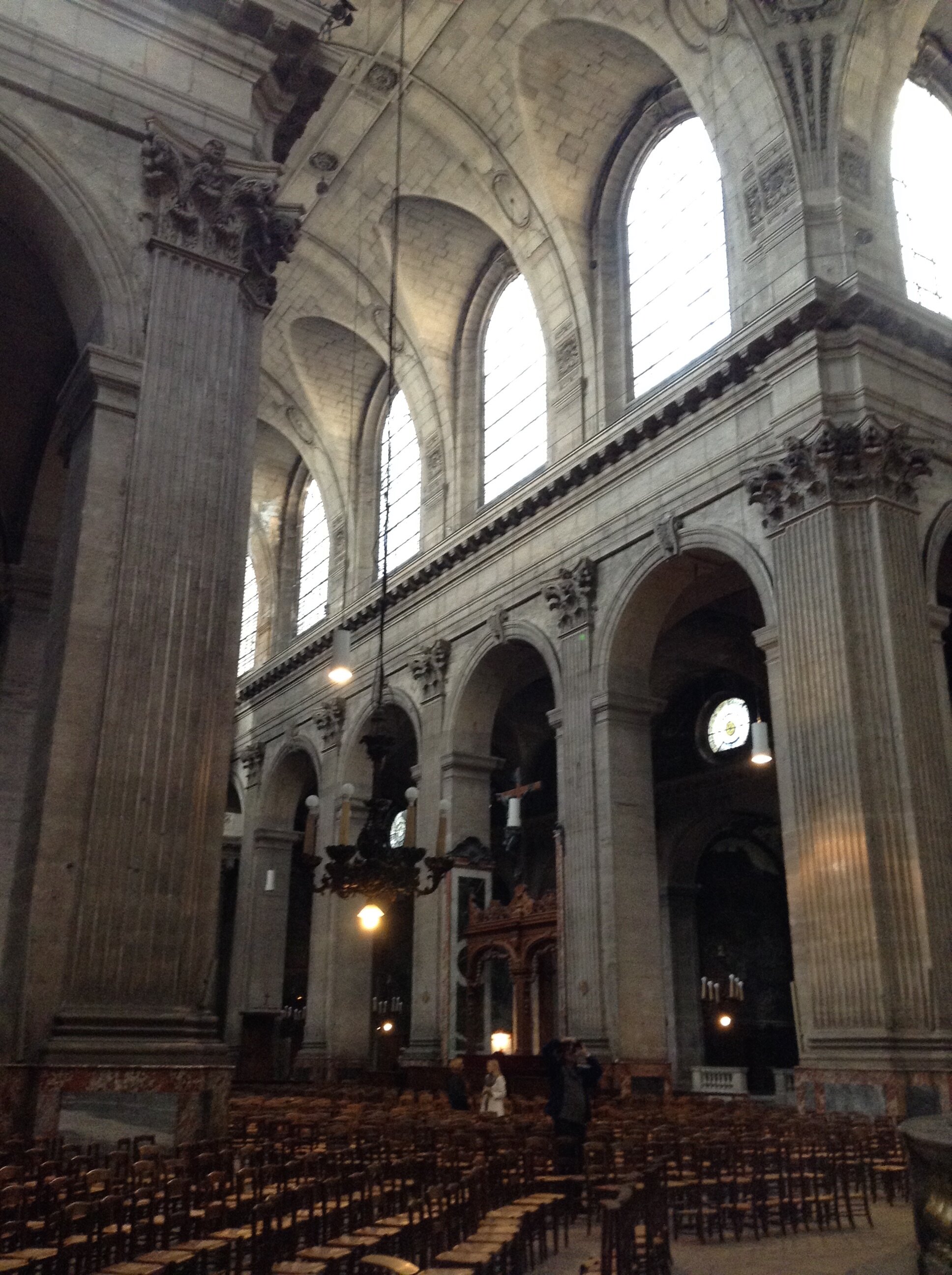
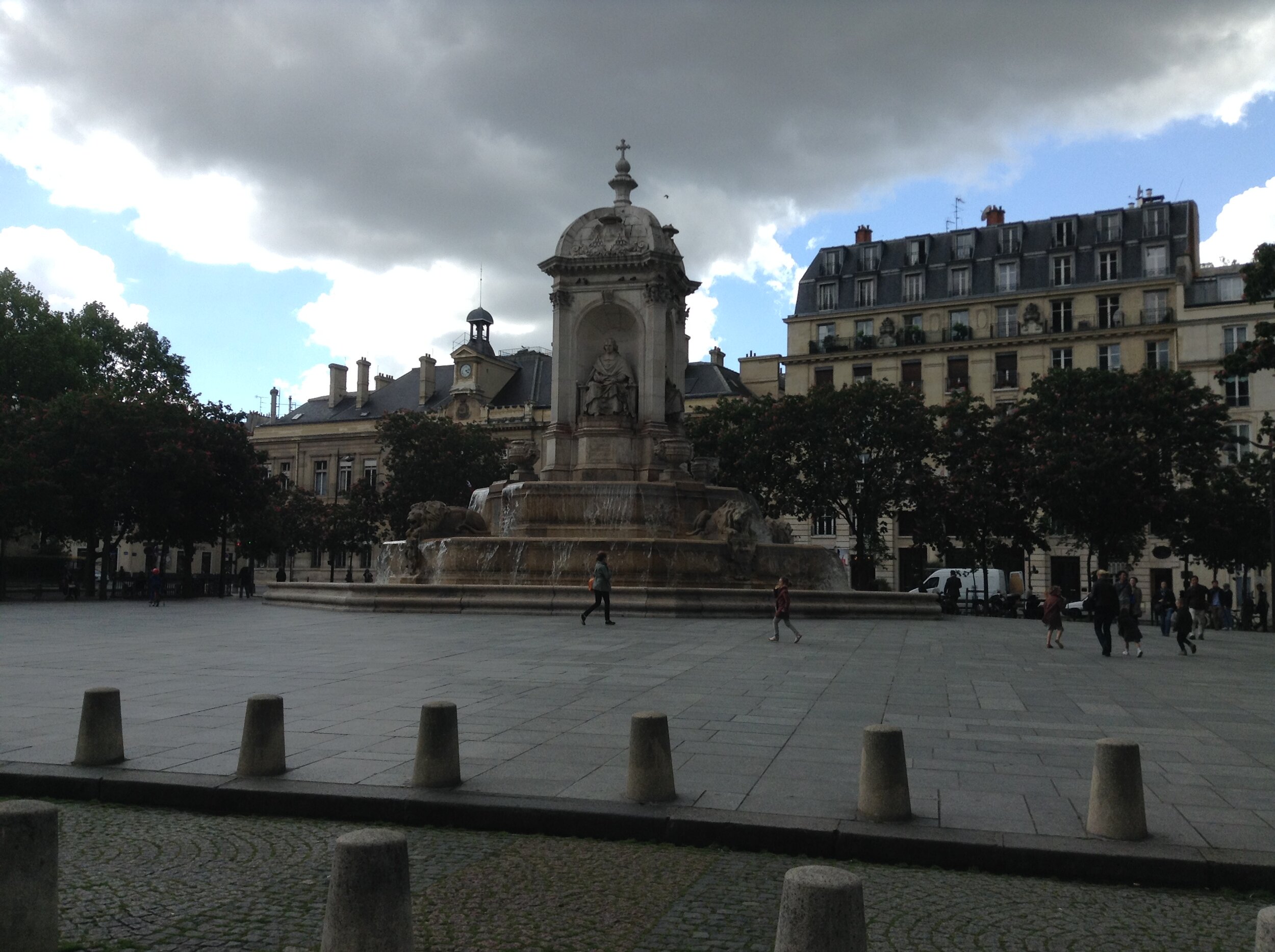
Practical Information: Open daily from 7:30am-7:30pm, with the exception of religious holidays. Admission is free. To learn which holidays the church is closed or for the most up-to-date information regarding hours, tours, closures, etc., check HERE.
How to Get There: Take the subway to Saint-Sulpice (M4) station, or alternatively to Mabillon (M10). For a slightly farther walk – though still under 5 minutes – get off at station Saint-Germain-des-Prés (M4).
l’Église de St-Germain-des-Prés
A 6th century medieval church that makes for a great display of transitional architecture, from late Romanesque to early Gothic – both incorporated seamlessly. Founded by the Frankish King Childebert I (part of the Merovingian dynasty, and son of Clovis I), this small church at the heart of the St. Germain neighbourhood was once one of the country’s wealthiest abbeys, housing monastic orders for centuries. Though the original abbey was lost during Viking wars, a new church was rebuilt in the same spot in its honour, hints of the original foundation still present.
The newer church, which was built in in the early in the 10th century but remodelled in 1150, has not been without its struggles over the centuries, though it remains in large part still standing today. Through restoration projects, one that is currently underway, the rich history of this small abbey-church remains preserved. The French Revolution saw the church used as storage, with an accidental explosion of saltpetre (a key ingredient in gunpowder) destroying the cloisters, and the political upheaval and people’s revolt lead to the loss of most of the church’s surrounding lands and property. A fire in the 18th century also destroyed the library.
While just the church remains, funerary stones marking Merovingian kings can still be found, as with a stone for Descartes. Additionally, a funerary stone for the abdicated King John II Casimir of Poland can be found, marking where he was buried and where not just his heart is entombed – the rest of his body having been sent back to Poland.











Practical Information: Open Monday-Saturday from 8am-7:45pm, and on Sunday’s from 9am-8pm. Be mindful of Sunday services, which are held at 9am, 10am, and 11am. Closed for visiting on religious holidays. Admission is free.
How to Get There: Take the subway straight to the church and the heart of the neighbourhood, getting off at station Saint-Germain-des-Prés (M4). Letting you off behind the church, you can also get off the metro at Mabillon (M10).

